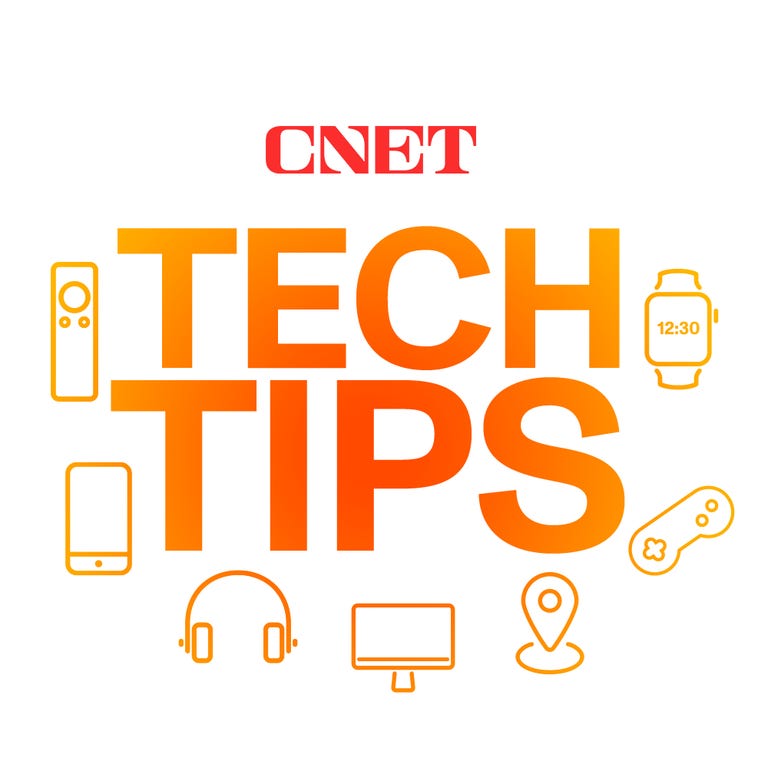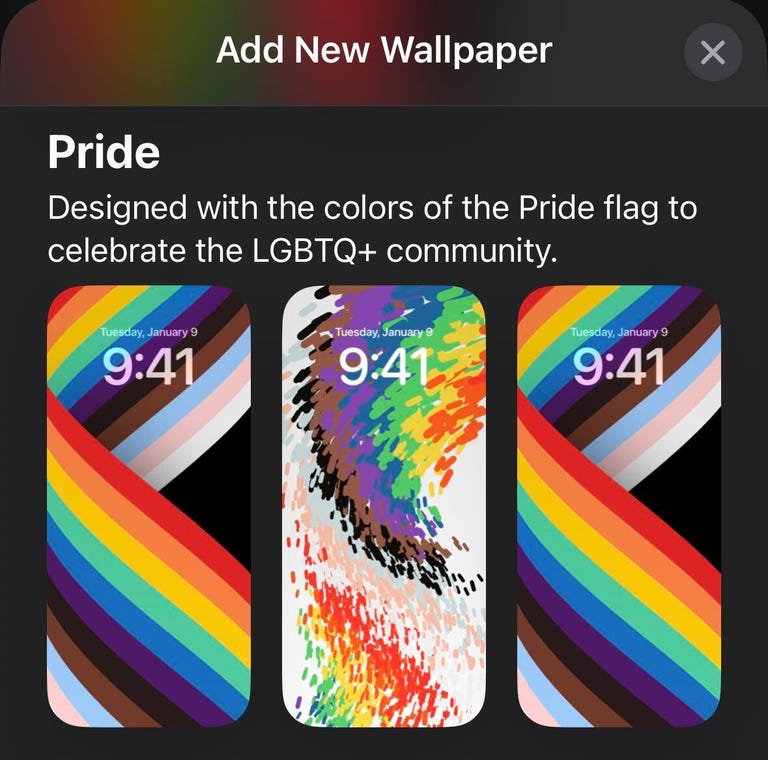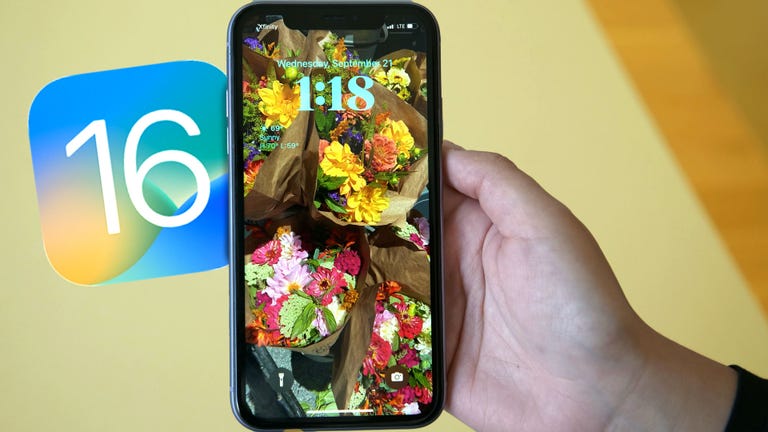Technologies
iOS 16.5: The New Features to Land on Your iPhone
Download the update now for these features and more.

Apple released iOS 16.5 to the general public on May 18, almost two months after the tech giant released iOS 16.4. The latest iOS update provides some important bug fixes and security patches, brings a few new features to Apple News, and serves up some new wallpapers.
However, some people have said the update drains their iPhone’s battery faster than usual. Apple previously said this isn’t unusual after an iOS update, and iPhones may need 48 hours to adjust to new features within an update. So if your battery does drain fast after this update, that should go away soon.

To download the latest iPhone update, go to Settings > General > Software Update and follow the onscreen prompts.
Below, you’ll find the new iPhone features you get with iOS 16.5. You can also check out the important security patches and bug fixes included in the update.
Pride Celebration wallpapers

New Pride Celebration wallpapers under the new Pride wallpaper section.
Apple added two new preloaded Pride Celebration wallpapers to a new Pride wallpaper section. That section is «designed with the colors of the Pride flag to celebrate the LGBTQ+ community,» its description reads.
You can access the new section by tapping Settings > Wallpaper > +Add New Wallpaper.
Apple News gets some sports upgrades
The Apple News app launched in 2015, and iOS 16.5 brings a Sports tab to the app for the first time. The tab can be found in the toolbar across the bottom of your screen when you open the app. Before, the toolbar displayed tabs for Today, News Plus, Audio, Following and Search. The update gets rid of the Search tab to make room for the Sports tab.
With iOS 16.5, the My Sports scores and schedule cards in Apple News also get an update. Now when you tap the three dots (…) in the bottom right corner of one of these cards, you’ll see an option for Go to Game. Tapping this option will bring up more details about that game.
Here are the release notes for iOS 16.5.
This update includes the following enhancements and bug fixes:
• A new Pride Celebration wallpaper for the Lock Screen to honor the LGBTQ+ community and culture.
• Sports tab in Apple News gives easy access to stories, scores, standings, and more, for the teams and leagues you follow.
• My Sports score and schedule cards in Apple News take you directly to game pages where you can find additional details about specific games.
• Fixes an issue where Spotlight may become unresponsive.
• Addresses an issue where Podcasts in CarPlay may not load content.
• Fixes an issue where Screen Time settings may reset or not sync across all devices.
Some features may not be available for all regions or on all Apple devices. For information on the security content of Apple software updates, please visit this website:
For more, check out why you should download iOS 16.5 now and how iOS 17 might turn your iPhone into a smart home-esque display. And if you want to try new iOS features before other folks, here’s how to become an Apple beta tester.

06:28
Technologies
Oura’s CEO Has Some Chill Advice for Avoiding Health-Tracking Anxiety
For the leading smart ring maker, «calm tech» seems to be the winning strategy.

When I sit down with Oura’s CEO, Tom Hale, in a quiet wooden booth on the outskirts of the Web Summit technology conference in Lisbon, I notice that he’s wearing two smart rings. Is he conducting competitor analysis? No, it turns out. Both of the rings are his own company’s devices.
One, he explains, is his personal ring, which contains all his data from the past four years. The second is linked to his beta account and shows him what’s coming in the next software update.
For Hale, wearing two rings that run two sets of software allows him to be plugged into every minuscule variation in data. This type of hyperfocus, essential for his job with the world’s leading smart ring maker, enables him to understand the ever-evolving experience of Oura customers before they do.
But being on high alert is not what he wants for the rest of us. Quite the opposite, in fact.
«Our philosophy very much is about being in the background,» says Hale. «We think of ourselves as calm tech.»
Don’t miss any of our unbiased tech content and lab-based reviews. Add CNET as a preferred Google source.
Calm tech is a departure from the majority of other wearable devices on the market, and it seems to be resonating. Over the past year, smart rings, which primarily measure activity and sleep, have surged in popularity, with sales more than doubling to 1.8 million units in 2024, and expected to hit around 4 million units this year, according to Omdia.
Many of us are choosing them over the best fitness trackers. Smart rings accounted for 75% of all fitness tracker revenue in the US this year, up from 46% the previous year, according to Circana.
Unlike standard fitness trackers, smart rings can’t provide real-time feedback, stats and coaching on your wrist. Instead, they record and synthesize your activity and sleep data for viewing on your phone at a later time. That’s enough for most people. The trade-off is especially worth it for those of us who want to nurture a less anxious attachment style to our personal tech and prioritize a real-world focus.
The majority of other wearables on the market aren’t conducive to this «passive» relationship. Smartwatches — and, for the most part, smart glasses — are body-worn screens, contributing to the ever-increasing and omnipresent information overload that tech subjects us to.
Easing health tech anxiety
Smart rings are, by their very nature, screen-free devices, and Oura wants to keep it that way. The Oura Ring 4 doesn’t include any flashing lights and indicators (it does have LEDs on the inside for measuring heart rate and blood oxygen). That decision was geared toward maintaining peace of mind, according to Hale.
«A lot of the most engaging and demanding applications are ones notifying you and creating anxiety where it doesn’t need to be there,» he says. «‘Oh, your heart rate’s elevated. You’re dying.’ Who needs that message? I don’t need that message.»
I don’t need it either. I’m far from alone in feeling that unfettered health tracking can quickly descend into an anxiety-inducing nightmare that causes more harm than good. Obsessing over not getting enough sleep has been known to induce insomnia. Intensive calorie tracking can cause people to disregard their bodies’ signals and ignore hunger cues.
This, Hale tells me, is what Oura strives to avoid. When the company introduced meal tracking into its app earlier this year, it was careful about how it framed the feedback, focusing on «gentle» advice.
The feature allows you to upload a picture of your food and input a brief description, before it’s scanned by AI and given a rating: nutritious, good, fair or limited. I raise my eyebrow at the inclusion of «good» as a rating. It could read as assigning a moral value to the food you’ve eaten. But Oura chose not to include a «bad» rating, which takes some of the sting out of it.
Oura also tries to steer people away from focusing on assigning a numerical value to their food, «which I think lends itself to sort of obsessive behaviors,» says Hale. You can see caloric intake if you wish, but Oura also offers a switch to let you turn off any mention of calories.
«For some people, counting calories is really triggering,» says Hale. «We try to be very sensitive to that, because we don’t want to create an unhealthy relationship with it, and we don’t want to shame people.»
For Oura customers to get the most out of their ring and subscription, Hale’s No. 1 tip is not to put too much value on a single health metric, but instead to take a holistic approach to the information to guide their actions. (Oura provides data on 40 different activities under its $6/£6 per month fee. By contrast, the Samsung Ring offers more limited tracking, free of charge.)
Hale says the company is not focused on measuring bodies. «We’re in the behavior-change business,» he says.
In the case of food, this might work by observing how your body reacts to what you’re eating and then examining how that reaction intersects with other factors, such as whether you’re rested, stressed or have exercised earlier that day.
Hale shows me a picture of the Portuguese flan he’d eaten the night before while in Lisbon. «Shocker,» he says, «look at my blood sugar spike.»
There’s nothing wrong with having the flan — it certainly doesn’t seem to have subdued Hale, who is animated and full of energy throughout our conversation. But seeing the impact of a rich, sugar-heavy meal late in the evening after a busy day at a tech event might help you understand how you feel, or even nudge you into eating differently the next day to balance things out.
‘It’s going to be OK’
Oura’s goal is to build context around why your body might be behaving a certain way, and increasingly, provide personalized, generative AI support via an LLM-powered chatbot that you can talk to about injuries and offer tailored advice. This, too, can help relieve any stress you might be feeling about your health, says Hale.
«One of the things that we try to do is strike a supportive tone in the AI, to kind of be like: ‘You had a bad night’s sleep, but it’s going to be OK.'» he says.
The AI Oura Advisor, which the company launched in summer 2024, can prompt the kind of behavior change Hale wants for Oura customers, such as suggesting you take a walk after a heavy meal to aid digestion. It even takes into account one frequently overlooked element of long-term health — social connection — and will prompt you to spend time with friends and family.
Over the past few years, there has been an explosion in longevity culture, with people investing money in products and services, like supplements and wellness services, that promise to extend their life and health spans.
The «moral hazard» of these products, says Hale, is that there’s no accountability. «If it works, great,» he says. «If it doesn’t work, you’re not gonna call me. You know why? Because you’re dead.»
Oura doesn’t exclude itself entirely from the conversation around longevity. Back in May, it released an ad that Hale calls «cheeky,» featuring older adults wearing Oura rings and living their best lives. But it didn’t promise we’d all become centenarians.
«Our premise is not: Hey, buy our supplement because you want to live forever,» says Hale. «Our premise is: Change your behavior today to make healthy choices, because then you’ll live a better life.»
It’s a convincing pitch, which might explain why Oura surpassed 5.5 million total rings sold back in September, putting it on track to hit $1 billion in revenue for the first time this year. According to the latest stats shared by the International Data Corporation, published in 2024, the company boasted an 80% market share.
Last month, the company scored a «decisive victory» in a patent infringement lawsuit against two of its competitors, Ringconn and Ultrahuman. So when Hale tells me he doesn’t test rivals’ rings «as much as he used to» because they’re «copying us,» I know it’s more than bravado.
Thanks to its intellectual property and growing troves of health data that enable it to refine its software, Oura has a clear competitive advantage in this rapidly growing market.
«I’m looking not for other things that other people are doing,» Hale says. «I’m looking for the stuff that we should do that’s really innovative.»
Disclosure: Katie Collins traveled to Lisbon as a guest of Web Summit to serve as a panel moderator. Her reporting from the event was independent of that role.
Technologies
The Final Supermoon of 2025 Is December’s Cold Moon
It’ll be earning its name as temperatures across the US are expected to be lower than average.

Your last chance to see a supermoon in 2025 is approaching quickly. December’s full moon is scheduled to appear on Dec. 4, exactly one week after Thanksgiving. Even if you don’t make plans to see it, you’ll probably see it anyway, as it’ll be the brightest thing in the night sky.
Don’t miss any of our unbiased tech content and lab-based reviews. Add CNET as a preferred Google source.
December’s Cold Moon is the third of four consecutive supermoons and the last one of 2025. Supermoons tend to come in packs of four thanks to how the moon orbits the Earth. The orbit is elliptical, meaning the moon is closer during some months and farther away in others. When it’s close to Earth, it’s referred to as perigee, and full moons during perigee are considered supermoons.
Since it is closer, the moon will be slightly bigger and brighter in the night sky. According to NASA, a supermoon is 14% larger and 33% brighter than a micro moon, which occurs during full moons when the moon is at its farthest point from Earth, a phenomenon known as apogee. Thus, it is the best time to view a full moon outside of special events like blood moons or lunar eclipses.
When is December’s full moon?
The Farmer’s Almanac reports that December’s full moon will take place on the evening of Dec. 4. It’ll reach peak illumination at 6:14 p.m. ET. Thanks to the recent daylight saving time change, it should be dark enough to see for most of the US, but if it isn’t, it’ll remain full all night. Those who can’t see it due to the weather can see a moon that is more than 90% full from Dec. 2-6.
You won’t need any special equipment to see the moon, as it’ll be the brightest thing in the night sky by a wide margin. Those who want to see more detail can certainly use a telescope or binoculars if they choose, which will make the moon’s various craters and textures easier to see.
December’s full moon is often referred to as the Cold Moon, as it typically occurs when the weather starts to become quite chilly. The moon is earning its name this time around, as a polar vortex is scheduled to hit the US during Thanksgiving and will stick around for a while afterward. The polar vortex will drive down temperatures in much of the US during the week of Dec. 1, so if you do go outside, make sure to bundle up.
Technologies
Anthropic’s New Claude Opus 4.5 AI Model Is Designed for Coding and Office Work
The new reasoning model can also power the Claude for Chrome AI browser extension.

Anthropic’s newest version of its most powerful generative AI model could upend how you manage your spreadsheets. The company said Claude Opus 4.5, announced Monday, is aimed at things you do on the job, like coding and office work.
Google unveiled its powerful new Gemini 3 model last week, and OpenAI released GPT-5.1 the week before. Now it’s Anthropic’s turn. The company, which is popular with businesses and software workers, said Opus 4.5 is focused on getting work done, not generating content.
Claude Opus 4.5 will be available everywhere and will be a default model for Pro (starting at $17/month), Max (starting at $100/month) and Enterprise users.
Opus 4.5 is built to produce documents, spreadsheets and presentations and can automate menial office tasks by using your computer and browser. That includes its deployment in Claude for Chrome, a browser extension that lets Claude do internet tasks for Max users.
This release puts all three Claude models in the 4.5 generation. Anthropic released Sonnet 4.5, its midlevel model, in September and Haiku 4.5, its smallest model, in October.
Advanced reasoning models like Opus are designed to handle complex, demanding tasks. While a smaller, cheaper large language model will provide an answer based on the probabilities in its training data, a reasoning model will rerun and refine its operations to get a better or more complete answer. This takes longer, but it means the AI can handle more difficult operations.
Reasoning models are particularly useful for complicated programming projects or intensive research. The downside is they are slower and more expensive to run, which is why companies often restrict them to paid plans or have strict limits on usage.
-

 Technologies3 года ago
Technologies3 года agoTech Companies Need to Be Held Accountable for Security, Experts Say
-

 Technologies3 года ago
Technologies3 года agoBest Handheld Game Console in 2023
-

 Technologies3 года ago
Technologies3 года agoTighten Up Your VR Game With the Best Head Straps for Quest 2
-

 Technologies4 года ago
Technologies4 года agoBlack Friday 2021: The best deals on TVs, headphones, kitchenware, and more
-

 Technologies4 года ago
Technologies4 года agoVerum, Wickr and Threema: next generation secured messengers
-

 Technologies4 года ago
Technologies4 года agoGoogle to require vaccinations as Silicon Valley rethinks return-to-office policies
-

 Technologies4 года ago
Technologies4 года agoOlivia Harlan Dekker for Verum Messenger
-

 Technologies4 года ago
Technologies4 года agoiPhone 13 event: How to watch Apple’s big announcement tomorrow
